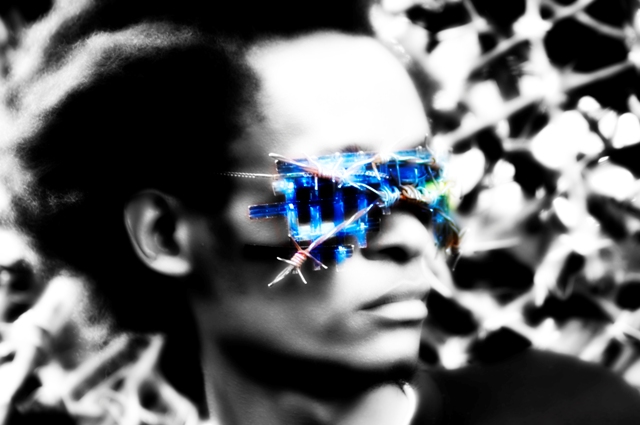News from Civsy, based on generative AI tools and retrieval-augumented real time data searchIn August 2024, Slovakia’s artistic community ignited a historic resistance movement after Culture Minister Martina Šimkovičová purged key cultural leaders, including Slovak National Theatre director Matej Drlička and National Gallery director Alexandra Kusá. Dubbed the Cultural Strike, this protests has since evolved into a sustained campaign against government censorship, ideological interference, and systemic neglect of cultural workers.
The Spark: Purge of Independent Voices
The dismissal of Matej Drlička on August 6, 2024, became a rallying cry for Slovakia’s cultural sector. A former clarinetist who transitioned to arts management after a career-ending accident, Drlička had revitalized the Slovak National Theatre since 2021, expanding its international reach through streaming partnerships. His abrupt removal—executed via a ministry official delivering a decree to his home—was justified by Šimkovičová as punishment for “political activism” and a backstage chandelier malfunction during a performance349.
The move paralleled the ousting of Kusá and funding cuts to LGBTQ+-themed projects, signaling a broader crackdown on institutions perceived as opposed to the Fico-Šimkovičová government’s conservative agenda368. Within days, over 10,000 protesters flooded Bratislava’s streets, with artists reading strike manifestos after performances and galleries staging “blackout” protests28.
Anatomy of the Cultural Strike
Coordinated by the Open Culture! platform, the strike formalized three core demands:
Professional Governance: End political appointments and restore merit-based leadership.
Fair Funding: Halt ideologically driven defunding of independent projects.
Worker Protections: Improve wages and social security for freelancers, who form 60% of Slovakia’s cultural workforce257.
By September 2024, over 1,700 workers from 135 institutions had joined the strike alert, wearing protest logos and displaying solidarity statements. Phase one avoided work stoppages but escalated with symbolic acts: sirens interrupting performances, strike demands read mid-show, and daily relay protests outside the Culture Ministry256.
The Political Backdrop: Illiberalism vs. Civil Society
The Fico-Šimkovičová coalition, in power since October 2023, has pursued policies mirroring Hungary’s Viktor Orbán and Poland’s Law and Justice Party. Šimkovičová, a far-right TV personality turned minister, frames her agenda as defending “traditional Slovak values” against “LGBT ideology” and “anti-Slovak” art368. Critics argue her reforms—such as abolishing the independent Slovak Arts Council and appointing loyalists to key posts—aim to dismantle cultural autonomy5610.
This agenda aligns with Prime Minister Robert Fico’s pro-Russian pivot, including a controversial December 2024 visit to Moscow that sparked nationwide protests15. The government’s narrative of a Western-backed “coup” against Fico further galvanized opposition, with Peace for Ukraine leader Lucia Štasselová condemning the rhetoric as fearmongering110.
International Solidarity and Legal Resistance
The Cultural Strike has drawn unprecedented global attention. Opera Europa condemned Drlička’s dismissal, while French officials awarded him the Ordre des Arts et des Lettres34. Over 230 international artists and institutions, including Candice Breitz and Claire Bishop, signed an open letter decrying Slovakia’s “political control of cultural institutions”8.
Domestically, Open Culture! published an 80-page report documenting government overreach and provided legal aid to workers interrogated for dissent56. Artist Ilona Németh, summoned by police for organizing a petition against Šimkovičová, emblemizes the movement’s defiance: “There is no need to be afraid. We must engage in civic activities”6.
The Road Ahead: Resilience in the Face of Repression
As of April 2025, the Cultural Strike persists, with daily relay protests outside the Culture Ministry and plans for escalated actions. The government remains intransigent, dismissing demands as “liberal sabotage”67. Yet the movement’s cross-generational unity—spanning students, freelancers, and institutional leaders—underscores its durability.
For Drlička, now a symbol of resistance, the struggle transcends culture: “This is about whether Slovakia remains part of Europe’s democratic fabric”4. As Central Europe’s illiberal tide surges, Slovakia’s artists have emerged as an unlikely vanguard in the fight for civic freedom.
Citations:https://en.wikipedia.org/wiki/2025_Slovak_protestshttps://www.theartnewspaper.com/2024/09/06/pressure-mounts-in-slovakia-as-cultural-workers-announce-nationwide-strike-alerthttps://www.lemonde.fr/en/international/article/2024/08/15/slovakia-s-government-is-going-to-war-against-artists-and-lgbt-ideology_6715641_4.htmlhttps://operawire.com/q-a-matej-drlicka-on-his-dismissal-from-slovak-national-theatre-rise-of-authoritarian-regimes/https://networkcultures.org/ourcreativereset/2025/01/15/the-slovak-culture-strike/https://www.erstestiftung.org/en/in-slovakia-the-devastation-of-culture-continues-massively/https://china-cee.eu/2024/10/31/slovakia-political-briefing-a-turbulent-slovak-political-and-cultural-summer/https://artreview.com/purge-feared-as-multiple-slovakian-arts-heads-dismissed/https://www.eurotopics.net/en/324453/slovakia-wave-of-dismissals-at-cultural-institutionshttps://natashatripney.substack.com/p/the-purge-why-slovakias-cultural










